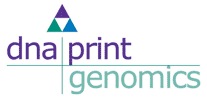
Image by Aaron Logan
Roughly 6 million years ago, the Hominini subtribe of the Hominidae family tree (the so-called “great apesâ€) diverged into two known branches, with one branch (genus Pan ) resulting in modern-day Chimpanzees and Bonobos, and the other branch (genus Homo) resulting in modern-day humans.
Since there has only been 6 million years of divergent evolution, Chimpanzees/Bonobos and Humans share a great deal of DNA sequence in common (although estimates vary widely and typically depend on what, exactly, is being considered in the comparison).
The Close Cousins DNA Project
On May 31, 2008, the Close Cousins DNA Project was launched by Bill Davenport as a result of a discussion on the Genealogy-DNA mailing list regarding the relatedness of human and chimpanzee Y-DNA. From the launching post:
 In October 2007, I wrote about the launch of
In October 2007, I wrote about the launch of 
 In February, I received a
In February, I received a 
